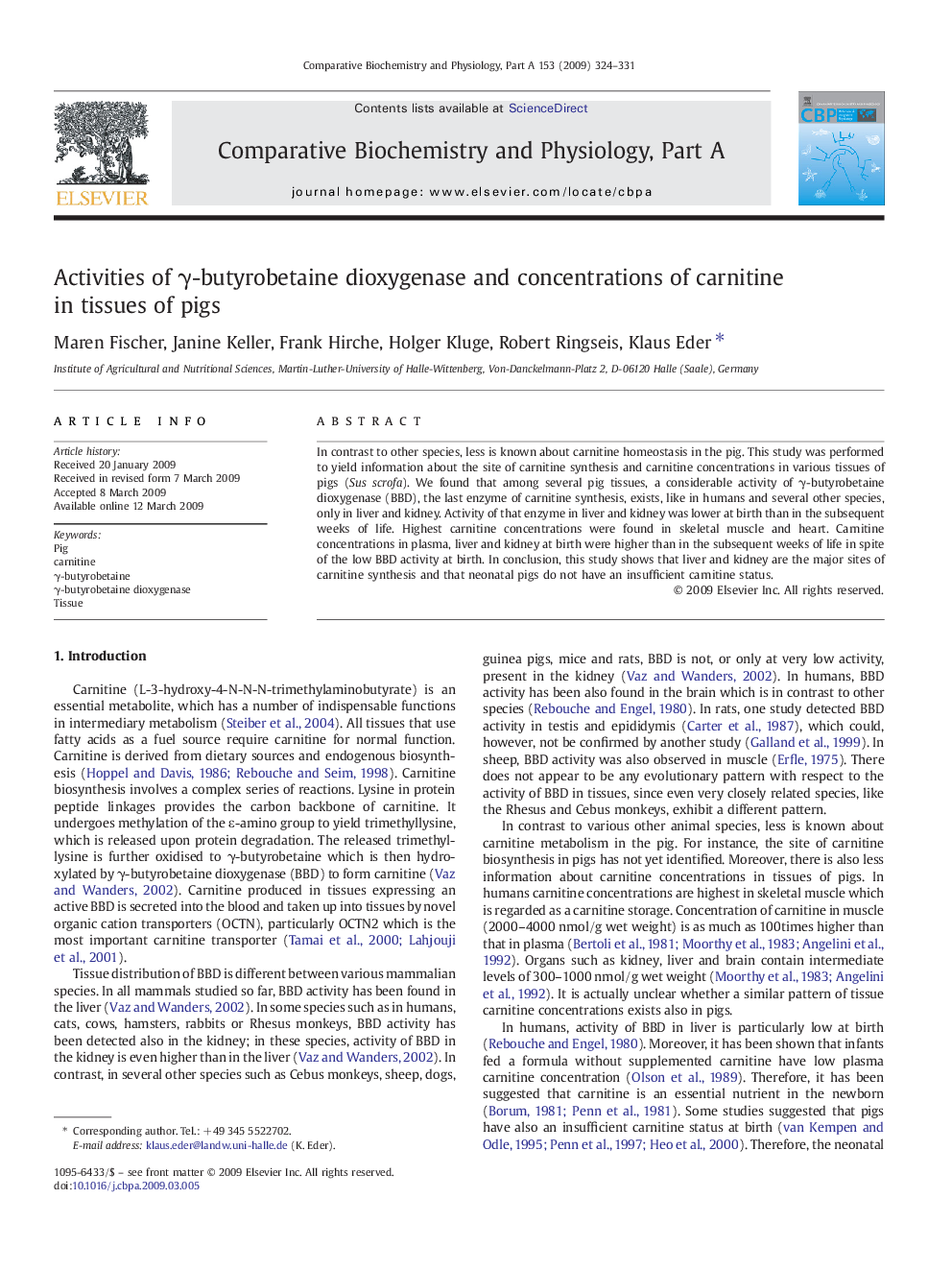| Article ID | Journal | Published Year | Pages | File Type |
|---|---|---|---|---|
| 1974592 | Comparative Biochemistry and Physiology Part A: Molecular & Integrative Physiology | 2009 | 8 Pages |
In contrast to other species, less is known about carnitine homeostasis in the pig. This study was performed to yield information about the site of carnitine synthesis and carnitine concentrations in various tissues of pigs (Sus scrofa). We found that among several pig tissues, a considerable activity of γ-butyrobetaine dioxygenase (BBD), the last enzyme of carnitine synthesis, exists, like in humans and several other species, only in liver and kidney. Activity of that enzyme in liver and kidney was lower at birth than in the subsequent weeks of life. Highest carnitine concentrations were found in skeletal muscle and heart. Carnitine concentrations in plasma, liver and kidney at birth were higher than in the subsequent weeks of life in spite of the low BBD activity at birth. In conclusion, this study shows that liver and kidney are the major sites of carnitine synthesis and that neonatal pigs do not have an insufficient carnitine status.
